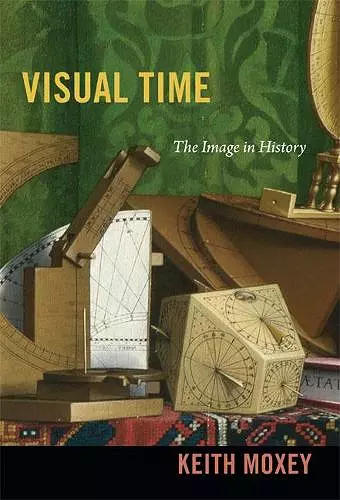Visual Time
Format:Hardback
Publisher:Duke University Press
Published:17th Jun '13
Currently unavailable, and unfortunately no date known when it will be back

Examining the notion of time in art history, Keith Moxey argues that looking at a work of art creates an experience of time for the viewer distinct from the work's place in the history of art.Visual Time offers a rare consideration of the idea of time in art history. Non-Western art histories currently have an unprecedented prominence in the discipline. To what extent are their artistic narratives commensurate with those told about Western art? Does time run at the same speed in all places? Keith Moxey argues that the discipline of art history has been too attached to interpreting works of art based on a teleological categorization-demonstrating how each work influences the next as part of a linear sequence-which he sees as tied to Western notions of modernity. In contrast, he emphasizes how the experience of viewing art creates its own aesthetic time, where the viewer is entranced by the work itself rather than what it represents about the historical moment when it was created. Moxey discusses the art, and writing about the art, of modern and contemporary artists, such as Gerard Sekoto, Thomas Demand, Hiroshi Sugimoto, and Cindy Sherman, as well as the sixteenth-century figures Pieter Bruegel the Elder, Albrecht Durer, Matthias Grunewald, and Hans Holbein. In the process, he addresses the phenomenological turn in the study of the image, its application to the understanding of particular artists, the ways verisimilitude eludes time in both the past and the present, and the role of time in nationalist accounts of the past.
"The time is out of joint for art history and image studies more generally. Keith Moxey's Visual Time makes this traditional curse into a blessing for scholars who want to rethink the nature of historical temporality and free it from the monotony of homogeneous empty time. Moxey shows that history (and no doubt memory as well) are deeply anachronistic in structure, and that images and works of art play a central role in revealing the multiple, disjunctive temporalities we inhabit, not only as art historians, but as subjects of human experience. Moxey's book will be required reading for anyone interested in thinking about images of and in time." -- W. J. T. Mitchell, author of Seeing Through Race and editor of the journal Critical Inquiry "This is a beautiful and thoughtful book on the fundamental meanings of time in art historical writing. Keith Moxey is open to the radical possibility that the encounter with the artwork, as distinct from the interpretation of that work, might not so much reveal the object's historical time as mute it, bringing the viewer and the art into a domain of plenary experience, and an awareness of historical blindness, that are only distantly and problematically compatible with the traditional interests of the discipline of art history." -- James Elkins, author of What Photography Is "Every page is graced with an erudite yet refreshingly accessible writing style-a rare feat these days-which makes the reader feel excessively smart... If you are not afraid to come away with more questions than you started with, this book definitely belongs within easy reach on your shelf. It is a book to anyone interested in the philosophy of time, the nature of art, and the ever-growing contemporary discourses of history and art history." -- SeungJung Kim Art in America "Though it is a far-reaching critique of the kind of historicism that contents itself with studying the past without regard for the present, Keith Moxey's Visual Time: The Image in History is not an attempt to liberate us from history. On the contrary, it is a critique of historicism in the name of history, and it never loses sight of the urgent issues that have fueled historicism, especially in the last century." -- Amy Knight Powell CAA Reviews "Due to the breadth and variety of content and theory, the book should have wide-ranging application for art historians working in a number of geographic regions and time periods, and it should benefit those working in theory as well as object-based scholarship... Moxey's work is another valuable foray into a rich field, and it has the potential to reshape art historical discourse." -- James Fishburne Comitatus "This book, with its sophisticated language and discussion of methodological and historiographical insights, will be key reading for graduate students and scholars across art history and related fields. While the case studies pertain largely to sixteenth-century northern European works, Moxey's thoughtful and provocative consideration of issues related to time, history, periodization, style, aesthetics, and presence in the interpretation of objects from the past will appeal to all who are grappling with these theoretical issues." -- Joyce de Vries Sixteenth Century Journal "Affect and historicism-dueling presences within any art experience-animate Keith Moxey's superb new collection of essays on Northern Renaissance painting." -- Christopher P. Heuer Renaissance Quarterly
ISBN: 9780822353546
Dimensions: 250mm x 150mm x 15mm
Weight: 666g
224 pages